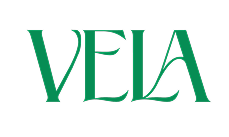Hijab is one of the most visible forms of faith and identity for Muslim women. Despite its significance, misconceptions about its meaning and purpose persist, both within and outside the Muslim community. To truly honor the value and meaning of the hijab, it is important to distinguish between what it actually represents and the false narratives often attached to it.
The True Meaning of Hijab
-
An act of faith: Hijab as we know it is an expression of devotion to Allah swt. It transitions us into a journey of modesty, humility, and self-respect. It is not just about clothing, but also conduct, values, and a commitment to one’s faith.
-
A choice of identity: For many women, wearing the hijab is a daunting yet conscious decision to embrace faith openly. It reflects strength, empowerment, and confidence, rather than conforming to the expectations of beauty or appearance that society tricks women into.
-
A form of modesty: Modesty in Islam is not limited to how we dress, it extends to speech, behavior, and interactions (this goes for men as well). The hijab reminds both Muslim men and women to maintain dignity, respect, and boundaries in public and private life affairs.
The False Meaning of Hijab
-
A tool of oppression: The biggest misconception with the hijab is that it is forced upon women as a symbol of control or suppression. Although it may be true in certain cases from a cultural and political context, the essence of hijab in Islam is rooted in free will and personal devotion. The assumption that all women who wear hijab are oppressed strips them of their voice.
-
A measure of piety: Another false belief is that hijab is the sole indicator of faith. Islam does not reduce spirituality to outward appearance. A woman's worth or devotion cannot be judged by whether she wears the hijab, just as it cannot be measured solely by prayer or other visible acts of worship.
-
A cultural symbol only: Sometimes the hijab can be mistaken as merely cultural clothing rather than religious. While styles vary across regions, its foundation is spiritual and scriptural. Understanding the difference is crucial to respecting its true significance.
Knowing the differences matters greatly for Muslims and non Muslims across the globe. Misinterpretations of the hijab can lead to harmful stereotypes, discrimination, and misplaced judgements. By clarifying its true meaning, we can offer a space for Muslim women to define their experience authentically. Overall, steps toward inclusivity and empowerment is the goal. With social media, we can fall into more misinterpretations as well so remain steadfast in faith, walk with haya, and continue to learn the meaning of hijab throughout your life.
At VELA, we believe that hijab is not just a garment, it is a meaningful expression of identity, faith, and strength. Our mission is to create scarves that allow women to feel confident, dignified, and true to themselves, while honoring the values that inspire the hijab.



Leave a comment